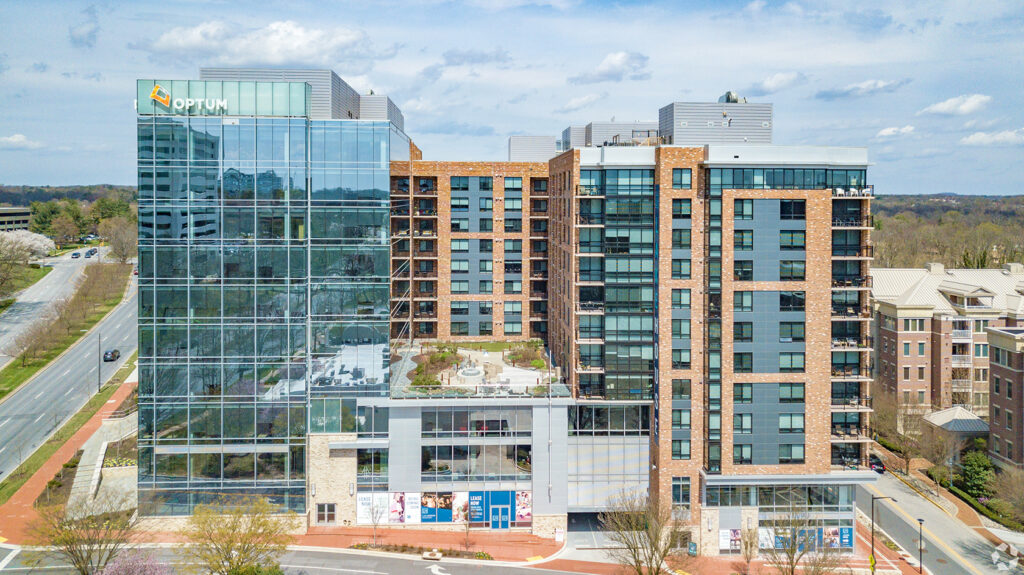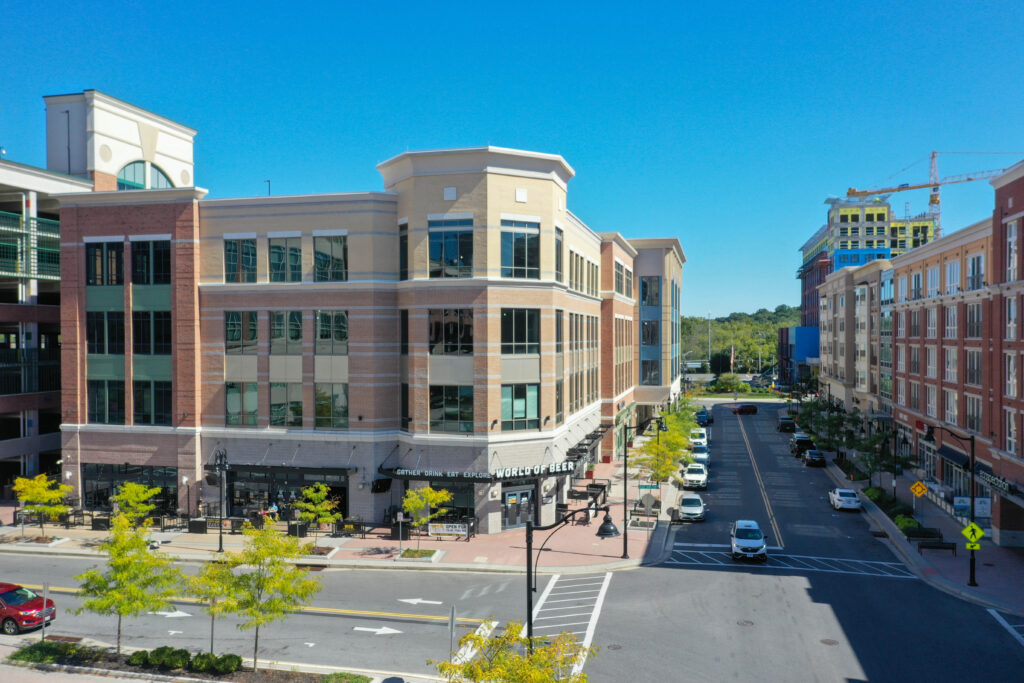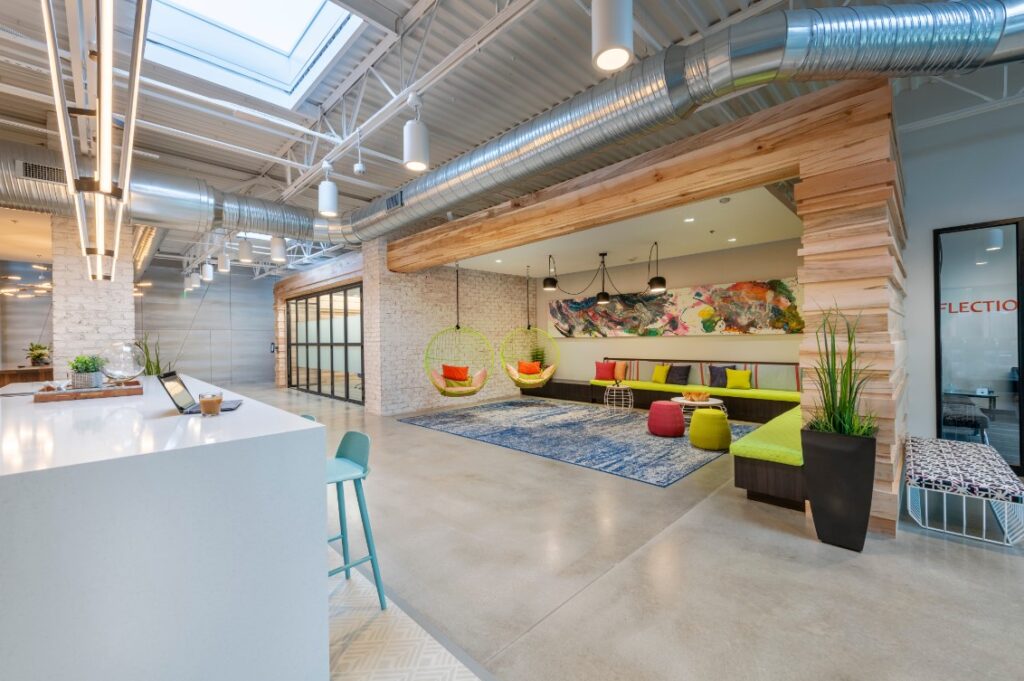After a year of mid-pandemic slowdowns, challenges and uncertainties, Central Maryland’s office market is beginning to revive and adapt. We caught up with several NAIOP-MD members to get their impressions of current trends in office leasing.
Leasing Levels
While office leasing is not roaring back, it is experiencing heightened activity levels and signs of promise in some product categories and locations.
At JLL, “leasing activity is down 30 percent in terms of actual deals closing,” said Robert Manekin, Managing Director – Markets. After experiencing very little leasing activity from April to September 2020, “starting in February 2021, activity levels have been good to excellent… Compared to pre-pandemic levels, tours and inquiries are back in full force. However, there appears to be reluctance when it comes to signing new leases.”
“We are experiencing very strong office demand in buildings with smaller sized office suites in the 1,000 square foot to 3,000 square foot range,” said Kevin Keane, Senior Vice President of Office Leasing at David S. Brown Enterprises. “Office leasing activity in buildings with larger floor plates that accommodate corporate office tenants in the 20,000 square foot to 30,000 square foot size range has been below average.”
David S. Brown, which experienced record office leasing volume in 2019, expects “that the 2021 full year volume will fall below these record levels as we are seeing some slowing in office showings. Several large tenant requirements have been postponed temporarily due to the pandemic,” Keane said.
Terri Harrington, Senior Vice President at MacKenzie Commercial Real Estate Services, describes a similar mixture in leasing conditions.

“Leasing activity still has not come back to the extent we experienced prior to the pandemic,” Harrington said. “We do see some smaller tenants out in the market capitalizing on potential lease deals, but larger tenants seem to be waiting to make decisions about future office space.”
In the Columbia market, Adam Nachlas, Senior Vice President at MacKenzie Commercial Real Estate Services, has noticed “an appreciable uptick in activity beginning four months ago.”
For Class A buildings, “we have seen a sharp increase in showings in the last 30 days,” Nachlas said in mid-May. “It feels like people are able to make decisions now that people are being vaccinated and there is a feeling that we know what a return to ‘normal’ will look like.”

“What we are seeing now is companies exhaling a little,” said Gail Chrzan, Senior Vice President at Blue and Obrecht Realty.
Companies whose leases were set to expire in 2020, typically extended the lease for just one year while they waited to see how the pandemic and recession would play out, Chrzan said. “Now we are seeing companies leasing for three years or five years. They are betting on the future,” she added.
In Harford County, “demand is not as strong as before Covid, but demand has picked up in recent months. This is making a dent in our vacancy levels,” said Beetle Smith, Senior Vice President with MacKenzie Commercial Real Estate Services.
While leasing by defense contractors has remained low, multiple contractors have started inquiring about space recently in anticipation of new federal contract awards later this year, Smith said.
Like several other NAIOP-MD members covering multiple local markets, Smith has noticed an uptick in a particular submarket. “I have done several leases in the last six months with psychologists. They are not big leases — 1,000 to 1,500 square feet. But counselors are expecting to do a lot of business.”
Flight to Quality… and Suburbs
The turmoil of the pandemic, the desire to entice employees back to the office and ongoing high demand for talented workers appear to be increasing interest in high-quality properties.
The good news in the office market currently, Manekin said, “is a flight to quality, better space and healthier space through improvements to technology and ventilation.”
That trend is sustaining demand and rental rates for Class A trophy office space in Baltimore City, he added.
The Columbia market is experiencing “a considerable flight to quality,” Nachlas said. “We are seeing Class A buildings with walkable amenities faring the best, especially those that have amenities in the building, such as meeting spaces, food options, gyms, etc.”

Even in 2020, David S. Brown “experienced solid rental rate increases throughout much of the portfolio, particularly with small-sized suites where demand has been the strongest,” Keane said. “We are seeing employers placing less emphasis on saving 50 cents a square foot on rental rates and more emphasis on securing quality office space that will help them attract and retain excellent, productive employees.”
In a mid-pandemic business environment, some employers are also opting to move their operations to suburban sites.
“One trend we have seen is a significant increase in downtown Baltimore City office tenants seeking relocation to the suburbs,” Keane said. “We have seen several law firms and accounting and financial services firms touring over the past 12 months. Free parking, shorter commutes, more open space are all attractions for suburban office buildings.”
“Office leasing activity is fairly robust in most of our suburban markets, but less so presently in urban markets… City properties are experiencing below average activity levels,” said John Hermann, Vice President, Asset Management/Leasing at COPT. “Suburban properties in the Baltimore-Washington Corridor are seeing many new prospects. Flex/office product seems to be experiencing especially robust prospect activity.”
Within the corridor, “I feel prospect activity is just as high as pre-pandemic levels. High-amenity locations seem to be of particular interest. Perhaps employers are trying to give employees reasons to come back to the office,” Hermann said.
Similarly, JLL has noted increased office leasing activity in Owings Mills, Howard County and Annapolis.
In part, the trend builds on pre-existing interest in live-work-play developments, Chrzan said.
“People are interested in places like Metro Centre, Columbia and Maple Lawn where you can walk to work and you don’t have to commute 45 minutes,” she said. “That replicated urban environment is appealing.”